We don’t think it’s much of an understatement to say that ‘adulting’ can be tough. There are bills to pay that we hadn’t even heard of in our youth. Bones, joints and muscles ache that, erm, we weren’t even aware of in our youth. And as Ezra Koenig once wrote, most probably of the trials and tribulations of adulthood, ‘’every time a problem ends, another one begins’’.
But perhaps even trickier to negotiate as a newly-minted adult are the routine hurdles and obstacles that stalk our everyday. How do you properly clean your cleaning equipment? Who is responsible for replacing the fire alarm battery in the communal hallway? What artwork will make your home look both cutting edge and mature? And how exactly do you frame, hang and display that carefully chosen artwork to show it off but not look like you’re showing off?
We’re here to deal with that latter consideration today; here’s how to frame, hang and display your artwork to catch the attention of guests.
The Right Size & Colour Of Frame
As the German-born theoretical physicist Albert Einstein once said, ‘’the framing of a problem is often far more essential than its solution.’’
And you know where we’re going with that quote. Indeed, the frame is as important as the art within it; the right choice of frame has the ability to contribute to the artistic merit of a room in its own right. Because of this, it’s essential that you pair the frame not only to the picture within it, but also to the wall and room that surrounds it.
Size matters, too. Or, more accurately, the border between frame and picture matters. Ideally, you actually want your picture to be framed twice; firstly, by a border of plain, block colour – usually white – and secondly, by the frame itself.
This can only be achieved with the requisite accuracy by getting made-to-measure frames. Just a couple of centimetres in either direction can be the difference between perfect framing and something that looks sloppy and incongruous.
You’ll also want to make sure the actual hook holding the frame in place is sturdy and incongruous, to ensure the picture hangs perfectly and doesn’t look protracted from the wall. Generally speaking, drywall screws are advisable here, though if you’re in a rental property you’ll want to check with your landlord that you’re allowed to use them.
Read: How to make your rented home decor come to life
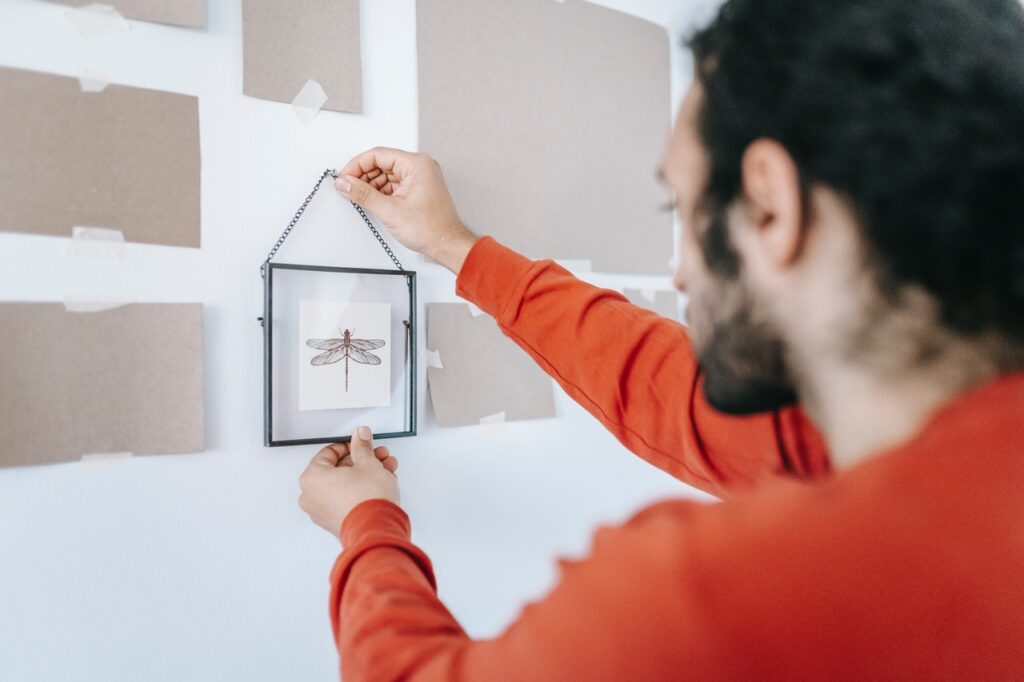
Visibility
The visibility of your carefully chosen, expertly framed artwork matters, too. You want your guests to notice your art and for it to catch their attention, sure, but you don’t want your pictures or photos to look too showy and deliberate, as that might come across as pretentious.
You wouldn’t place a sculpture slap bang in the middle of your living room, after all, and neither should your artwork be positioned front, row and centre of your wall. Think about where guests will most likely place themselves. In living rooms, for instance, people will most likely be sitting rather than standing, so make sure your art is hanging low enough to be at eye level when seated.
Your instinct may be saying ‘go high’, but in fact, your focal piece will look best at eye level. To get this right, use furniture to help you measure up. As a rule of thumb, the bottom of your artwork, or its frame, should be about 8-16 inches above the table or sofa. The same applies if you’re hanging a series of pieces – the lowest level piece should sit in the same place, and then you can stack upwards from there. Easy!
In rooms where people tend to stand, adjust the height of your hanging art to be at standing eye-level, accordingly. This will be particularly true in your hallways and kitchen.
Consider scale, too. Should you be hanging a piece of art above a sofa, for instance, you should ensure it’s at least two-thirds the size of the chair, otherwise, it will end up dwarfed by the furniture beneath it.
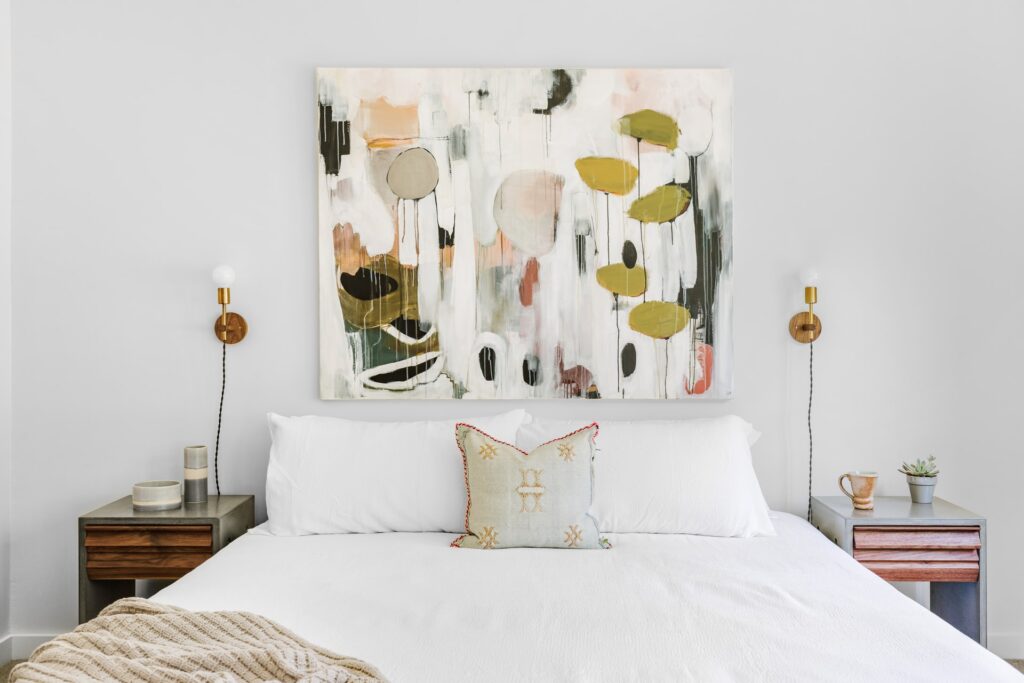
Synergy Or Snarl?
Some may prefer a wall, room or even whole home whose art is in perfect synergy, all relating to one theme and speaking of a singular style or even single artist, whether that’s Van Gogh prints or doodles you’re kids have drawn, blown-up and framed. Others might opt for a spirit of organised chaos, with disparate themes complementing each other rather than clashing.
For single walls, it’s probably best to go for the former, and ensure the themes of your artwork are relatively connected. If you have everything from abstract paintings to photographs of dogs next to each other, the overall aesthetic of the room will feel jarring.
That said, if you’re going for that ‘carefully cobbled together’ vibe, it’s a good idea to at least marry random pieces of artwork with other items in the room. Or even the whole house, if you’re thinking big. Try picking out a colour or two from the artwork, and then add hints of these tones in the soft furnishings of the room – like a vase, cushions, coasters or ornaments reflecting the colors cape of the art. This will tie everything together visually in a really neat, sophisticated way.
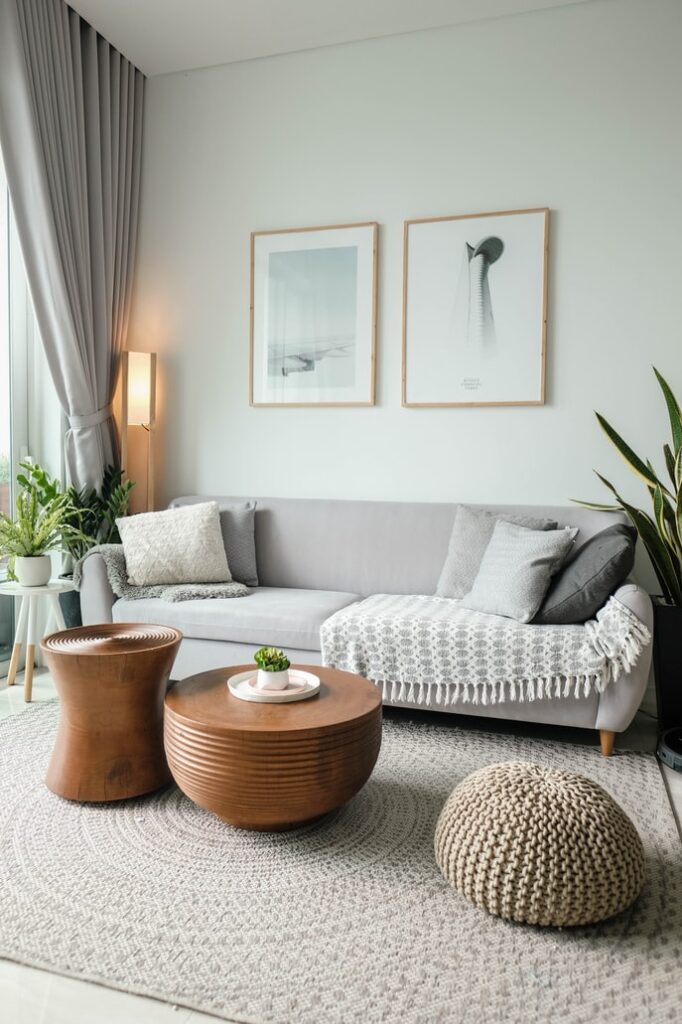
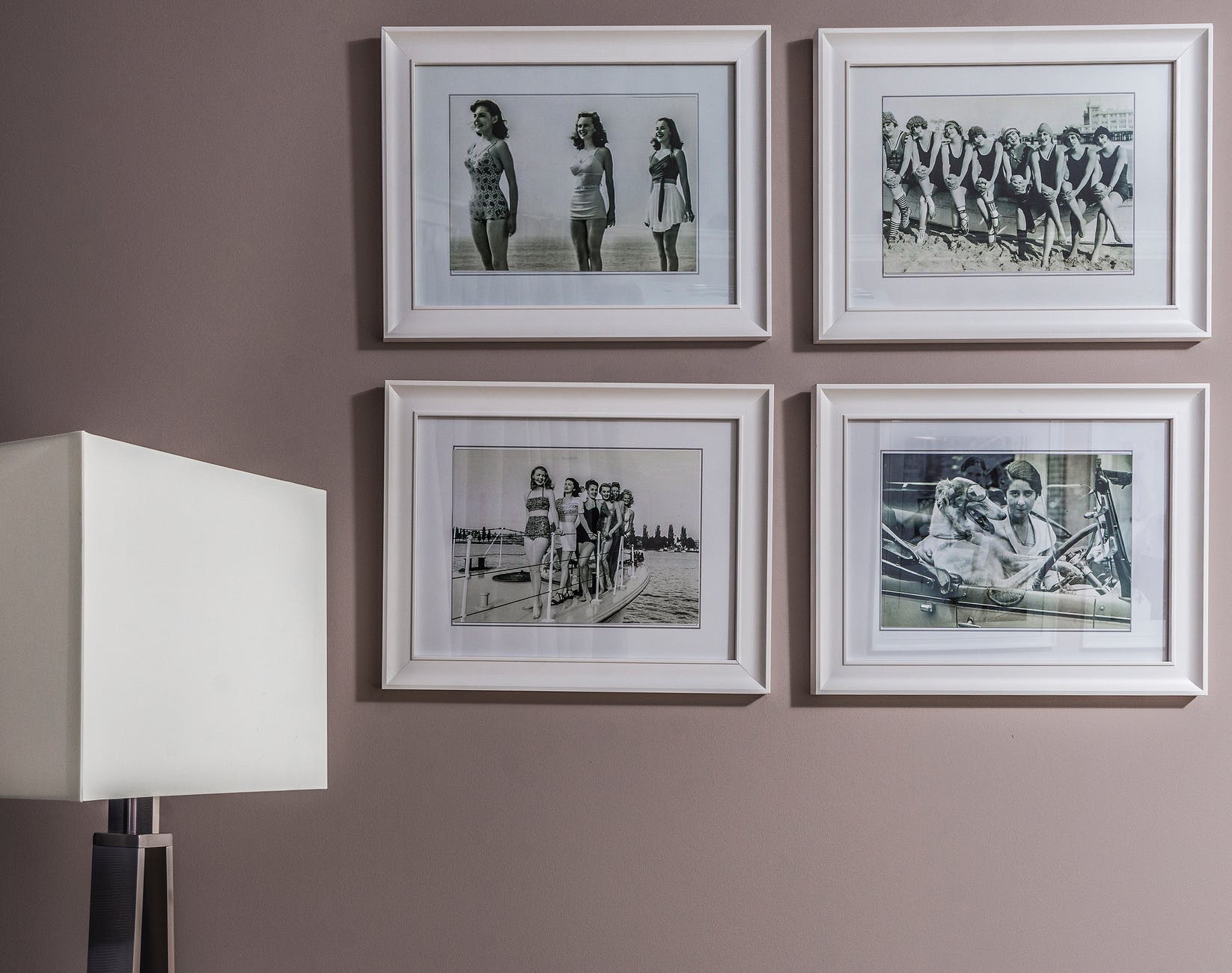
Use A Spirit Level
One of the most common mistakes when hanging artwork is not ensuring it is perfectly level. A spirit level is an essential tool for this task. Place the level on top of the frame and adjust until the bubble is centred. This will ensure your artwork hangs straight and looks polished. For larger pieces, it might be helpful to use a longer spirit level to ensure accuracy across the entire width of the frame. Additionally, check the level both horizontally and vertically to make sure the frame is not only level but also plumb.
Opt For Picture Hanging Systems
For a more flexible and less invasive approach, consider using a picture hanging system. These systems typically involve a rail that is mounted on the wall or ceiling, with adjustable hooks and cords that allow you to easily change the height and position of your artwork without making additional holes in the wall. This is particularly useful for those who like to frequently update their displays.
Picture hanging systems are also ideal for gallery wall art, as they allow for easy rearrangement and can support multiple pieces of varying sizes and weights. Look for systems that offer adjustable tension cords and hooks that can support the weight of your heaviest frames.
Use The Right Hardware
The type of wall you have will determine the best hardware to use. For plaster or drywall, use picture hooks or anchors that are rated for the weight of your artwork. For brick or concrete walls, masonry screws or wall plugs are necessary. Always ensure the hardware can support the weight of your frame to prevent accidents.
When dealing with particularly heavy pieces, consider using two hooks spaced evenly apart to distribute the weight more effectively. Additionally, for drywall, toggle bolts can provide extra support for heavier frames.
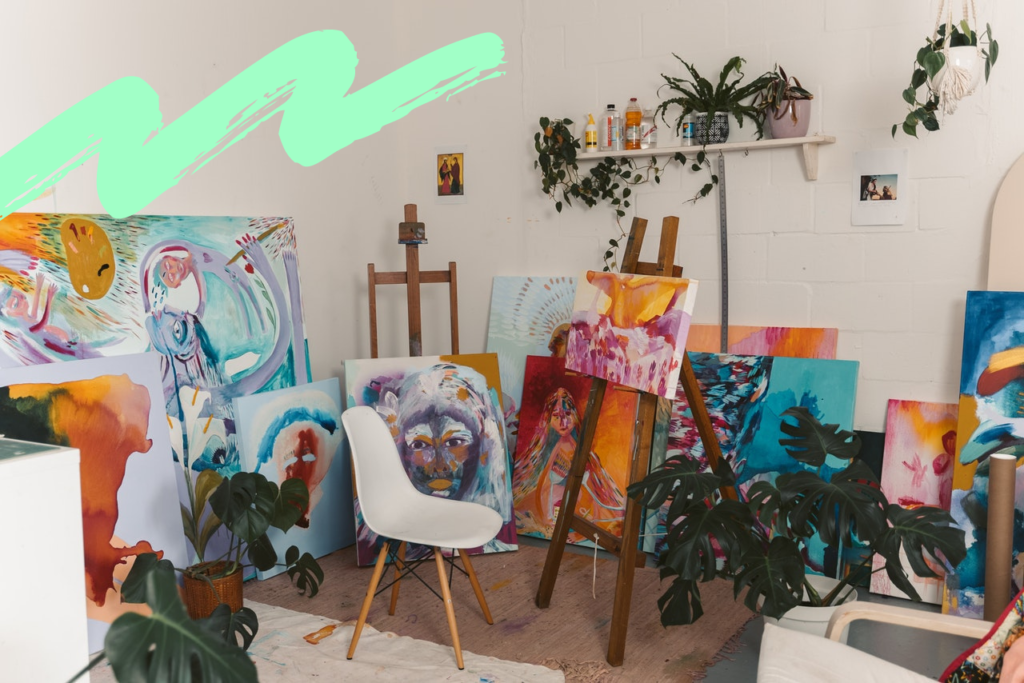
Consider Lighting
Proper lighting can dramatically enhance the appearance of your artwork. Picture lights, track lighting, or adjustable spotlights can be used to highlight your pieces. Ensure the lighting is not too harsh and does not create glare on the artwork. LED lights are a good choice as they do not emit UV rays, which can damage art over time.
When positioning lights, aim for a 30-degree angle from the light source to the artwork to minimise glare and shadows. For larger pieces, consider using multiple light sources to ensure even illumination. Dimmable lights can also be beneficial, allowing you to adjust the intensity based on the time of day and the ambiance you wish to create.
Use A Template
Creating a paper template of your artwork can help you visualise the placement before committing to a spot. Cut out pieces of paper to the size of your frames and tape them to the wall. This allows you to experiment with different arrangements and heights without making any holes.
For gallery walls, this method is particularly useful as it helps you plan the overall layout and spacing. Once you are satisfied with the arrangement, you can mark the positions of the hooks or nails directly on the template, ensuring precise placement when you hang the actual frames.
Mind The Spacing
When hanging multiple pieces, the spacing between them is crucial. A general rule of thumb is to leave about 2-3 inches between smaller pieces and 4-6 inches between larger ones. This ensures each piece has enough breathing room and the overall display looks cohesive. For a more dynamic arrangement, you can vary the spacing slightly, but be mindful of maintaining a balanced look.
When creating a gallery wall, start with the largest piece as the focal point and arrange smaller pieces around it, ensuring consistent spacing throughout.
Secure With Museum Putty
To prevent frames from shifting or tilting, especially in high-traffic areas or homes with children and pets, use museum putty. This adhesive putty can be placed on the back corners of the frame to keep it securely in place. Museum putty is also useful for securing objects on shelves and mantels, providing an extra layer of security. When applying the putty, use small, evenly sized pieces and press firmly to ensure a strong bond. This will help keep your artwork aligned and prevent any accidental bumps from causing it to tilt or fall.
Don’t Neglect That Personal Touch
Whilst we’re all desperate to show off our exquisite, esoteric taste in art, there’s a danger that in doing so, you neglect the personal flourishes of domestic art that makes a house a home.
You might not think that there is much point in displaying personal photos, but there is. If you have pictures of members of your family, either past or present, hanging up in your house, visitors will immediately feel more at home. And let’s face it; the photo of you from twenty years ago with that haircut is a far more engaging conversation starter for guests than another art deco print.
Another benefit of hanging up family photos is that it can liven up an otherwise dull area of your home. For example, if you have a hallway that looks like there’s something missing and a big piece of art won’t fill the void, hanging up some family photos can make the space feel more complete and inviting without you having to opt for a brash, showy piece of art. Beautiful!
If you’re keen to think outside the frame, then consider these 6 IDEAL pieces of functional art to bring style to your home. Happy hanging!





